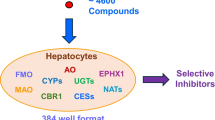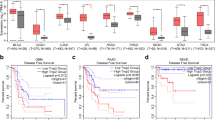ABSTRACT
Purpose
This study characterized 99mTc-Mebrofenin (MEB) and 99mTc-Sestamibi (MIBI) hepatic transport and preferential efflux routes (canalicular vs. basolateral) in rat and human sandwich-cultured hepatocytes (SCH).
Methods
99mTc-MEB and 99mTc-MIBI disposition was determined in suspended hepatocytes and in SCH in the presence and absence of inhibitors and genetic knockdown of breast cancer resistance protein (Bcrp).
Results
The general organic anion transporting polypeptide (Oatp/OATP) inhibitor rifamycin SV reduced initial 99mTc-MEB uptake in rat and human suspended hepatocytes. Initial 99mTc-MIBI uptake in suspended rat hepatocytes was not Na+-dependent or influenced by inhibitors. Multidrug resistance-associated protein (Mrp2/MRP2) inhibitors decreased 99mTc-MEB canalicular efflux in rat and human SCH. 99mTc-MEB efflux in human SCH was predominantly canalicular (45.8 ± 8.6%) and ∼3-fold greater than in rat SCH. 99mTc-MIBI canalicular efflux was similar in human and rat SCH; basolateral efflux was 37% greater in human than rat SCH. 99mTc-MIBI cellular accumulation, biliary excretion index and in vitro biliary clearance in rat SCH were unaffected by Bcrp knockdown.
Conclusion
99mTc-MEB hepatic uptake is predominantly Oatp-mediated with biliary excretion by Mrp2. 99mTc-MIBI appears to passively diffuse into hepatocytes; biliary excretion is mediated by P-gp. The SCH model is useful to investigate factors that may alter the route and/or extent of hepatic basolateral and canalicular efflux of substrates.




Similar content being viewed by others
Abbreviations
- 99mTc-MEB:
-
99mTechnetium-mebrofenin
- 99mTc-MIBI:
-
99mTechnetium-sestamibi
- Bcrp:
-
breast cancer resistance protein
- BEI:
-
biliary excretion index
- Clbiliary :
-
in vitro biliary clearance
- DMEM:
-
Dulbecco’s modified Eagle’s medium
- E217G:
-
estradiol-17-β-D-glucuronide
- FBS:
-
fetal bovine serum
- GF120918:
-
N-(4-[2-(1,2,3,4-tetrahydro-6,7-dimethoxy-2-isoquinolinyl)ethyl]-phenyl)-9,10-dihydro-5-methoxy-9-oxo-4-acridine carboxamide
- HBSS:
-
Hanks’ balanced salt solution
- Mrp:
-
multidrug resistance-associated protein
- NTCP:
-
sodium taurocholate cotransporter.
- OAT:
-
organic anion transporter
- OCT:
-
organic cation transporter
- PAH:
-
para-aminohippuric acid
- P-gp:
-
multidrug resistance protein P-glycoprotein
- RNAi:
-
RNA interference
- SCH:
-
sandwich-cultured hepatocytes
- siBcrp:
-
RNAi short hairpin knockdown of rat Bcrp
- siNT:
-
non-target siRNA
- TEA:
-
tetraethylammonium
- WT:
-
wild-type
REFERENCES
Doo E, Krishnamurthy GT, Eklem MJ, Gilbert S, Brown PH. Quantification of hepatobiliary function as an integral part of imaging with technetium-99m-mebrofenin in health and disease. J Nucl Med. 1991;32:48–57.
Krishnamurthy GT, Turner FE. Pharmacokinetics and clinical application of technetium 99m-labeled hepatobiliary agents. Semin Nucl Med. 1990;20:130–49.
Ghibellini G, Leslie EM, Pollack GM, Brouwer KLR. Use of tc-99m mebrofenin as a clinical probe to assess altered hepatobiliary transport: integration of in vitro, pharmacokinetic modeling, and simulation studies. Pharm Res. 2008;25:1851–60.
Bhargava KK, Joseph B, Ananthanarayanan M, et al. Adenosine triphosphate-binding cassette subfamily C member 2 is the major transporter of the hepatobiliary imaging agent (99m)Tc-mebrofenin. J Nucl Med. 2009;50:1140–6.
Pinos T, Constansa JM, Palacin A, Figueras C. A new diagnostic approach to the Dubin-Johnson syndrome. Am J Gastroenterol. 1990;85:91–3.
Beller GA, Sinusas AJ. Experimental studies of the physiologic properties of technetium-99m isonitriles. Am J Cardiol. 1990;66:5E–8E.
Mobasseri S, Hendel RC. Cardiac imaging in women: use of radionuclide myocardial perfusion imaging and echocardiography for acute chest pain. Cardiol Rev. 2002;10:149–60.
Piwnica-Worms D, Chiu ML, Budding M, Kronauge JF, Kramer RA, Croop JM. Functional imaging of multidrug-resistant P-glycoprotein with an organotechnetium complex. Cancer Res. 1993;53:977–84.
Luker GD, Fracasso PM, Dobkin J, Piwnica-Worms D. Modulation of the multidrug resistance P-glycoprotein: detection with technetium-99m-sestamibi in vivo. J Nucl Med. 1997;38:369–72.
Wong M, Evans S, Rivory LP, et al. Hepatic technetium Tc 99m-labeled sestamibi elimination rate and ABCB1 (MDR1) genotype as indicators of ABCB1 (P-glycoprotein) activity in patients with cancer. Clin Pharmacol Ther. 2005;77:33–42.
Chen CC, Meadows B, Regis J, et al. Detection of in vivo P-glycoprotein inhibition by PSC 833 using Tc-99m sestamibi. Clin Cancer Res. 1997;3:545–52.
Slapak CA, Dahlheimer J, Piwnica-Worms D. Reversal of multidrug resistance with LY335979: functional analysis of P-glycoprotein-mediated transport activity and its modulation in vivo. J Clin Pharmacol. 2001;Suppl:29–38.
Hendrikse NH, Franssen EJ, van der Graaf WT, et al. 99mTc-sestamibi is a substrate for P-glycoprotein and the multidrug resistance-associated protein. Br J Cancer. 1998;77:353–8.
Hendrikse NH, Kuipers F, Meijer C, et al. In vivo imaging of hepatobiliary transport function mediated by multidrug resistance associated protein and P-glycoprotein. Cancer Chemother Pharmacol. 2004;54:131–8.
Michael M, Thompson M, Hicks RJ, et al. Relationship of hepatic functional imaging to irinotecan pharmacokinetics and genetic parameters of drug elimination. J Clin Oncol. 2006;24:4228–35.
Wong M, Balleine RL, Blair EY, et al. Predictors of vinorelbine pharmacokinetics and pharmacodynamics in patients with cancer. J Clin Oncol. 2006;24:2448–55.
LeCluyse EL, Bullock PL, Parkinson A, Hochman JH. Cultured rat hepatocytes. Pharm Biotechnol. 1996;8:121–59.
Leslie EM, Watkins PB, Kim RB, Brouwer KLR. Differential inhibition of rat and human Na+ -dependent taurocholate cotransporting polypeptide (NTCP/SLC10A1)by bosentan: a mechanism for species differences in hepatotoxicity. J Pharmacol Exp Ther. 2007;321:1170–8.
Baur H, Kasperek S, Pfaff E. Criteria of viability of isolated liver cells. Hoppe Seylers Z Physiol Chem. 1975;356:827–38.
Wolf KK, Brouwer KR, Pollack GM, Brouwer KLR. Effect of albumin on the biliary clearance of compounds in sandwich-cultured rat hepatocytes. Drug Metab Dispos. 2008;36:2086–92.
Liu X, LeCluyse EL, Brouwer KR, et al. Biliary excretion in primary rat hepatocytes cultured in a collagen-sandwich configuration. Am J Physiol. 1999;277:G12–21.
Seglen PO. Preparation of isolated rat liver cells. Meth Cell Biol. 1976;13:29–83.
Yue W, Abe K, Brouwer KLR. Knocking Down Breast Cancer Resistance Protein (Bcrp) by Adenoviral Vector-Mediated RNA Interference (RNAi) in Sandwich-Cultured Rat Hepatocytes: A novel tool to assess the contribution of bcrp to drug biliary excretion. Mol Pharm. 2009;6:134–43.
Oude Elferink RP, Ottenhoff R, Liefting WG, Schoemaker B, Groen AK, Jansen PL. ATP-dependent efflux of GSSG and GS-conjugate from isolated rat hepatocytes. Am J Physiol. 1990;258:G699–706.
Studenberg SD, Brouwer KLR. Effect of phenobarbital and p-hydroxyphenobarbital glucuronide on acetaminophen metabolites in isolated rat hepatocytes: use of a kinetic model to examine the rates of formation and egress. J Pharmacokinet Biopharm. 1993;21:175–94.
Tarao K, Olinger EJ, Ostrow JD, Balistreri WF. Impaired bile acid efflux from hepatocytes isolated from the liver of rats with cholestasis. Am J Physiol. 1982;243:G253–8.
Groothuis GM, Hulstaert CE, Kalicharan D, Hardonk MJ. Plasma membrane specialization and intracellular polarity of freshly isolated rat hepatocytes. Eur J Cell Biol. 1981;26:43–51.
Borlak J, Klutcka T. Expression of basolateral and canalicular transporters in rat liver and cultures of primary hepatocytes. Xenobiotica. 2004;34:935–47.
Luttringer O, Theil FP, Lave T, Wernli-Kuratli K, Guentert TW, de Saizieu A. Influence of isolation procedure, extracellular matrix and dexamethasone on the regulation of membrane transporters gene expression in rat hepatocytes. Biochem Pharmacol. 2002;64:1637–50.
Dunn JC, Tompkins RG, Yarmush ML. Hepatocytes in collagen sandwich: evidence for transcriptional and translational regulation. J Cell Biol. 1992;116:1043–53.
Dunn JC, Yarmush ML, Koebe HG, Tompkins RG. Hepatocyte function and extracellular matrix geometry: long-term culture in a sandwich configuration. FASEB J. 1989;3:174–7.
Dunn JC, Tompkins RG, Yarmush ML. Long-term in vitro function of adult hepatocytes in a collagen sandwich configuration. Biotechnol Prog. 1991;7:237–45.
LeCluyse EL, Audus KL, Hochman JH. Formation of extensive canalicular networks by rat hepatocytes cultured in collagen-sandwich configuration. Am J Physiol. 1994;266:C1764–74.
Liu X, Brouwer KLR, Gan LS, et al. Partial maintenance of taurocholate uptake by adult rat hepatocytes cultured in a collagen sandwich configuration. Pharm Res. 1998;15:1533–9.
Liu X, LeCluyse EL, Brouwer KR, Lightfoot RM, Lee JI, Brouwer KLR. Use of Ca2+ modulation to evaluate biliary excretion in sandwich-cultured rat hepatocytes. J Pharmacol Exp Ther. 1999;289:1592–9.
Brock WJ, Vore M. Characterization of uptake of steroid glucuronides into isolated male and female rat hepatocytes. J Pharmacol Exp Ther. 1984;229:175–81.
Shitara Y, Li AP, Kato Y, et al. Function of uptake transporters for taurocholate and estradiol 17beta-D-glucuronide in cryopreserved human hepatocytes. Drug Metab Pharmacokinet. 2003;18:33–41.
Busch AE, Quester S, Ulzheimer JC, et al. Electrogenic properties and substrate specificity of the polyspecific rat cation transporter rOCT1. J Biol Chem. 1996;271:32599–604.
Chen R, Nelson JA. Role of organic cation transporters in the renal secretion of nucleosides. Biochem Pharmacol. 2000;60:215–9.
Grundemann D, Gorboulev V, Gambaryan S, Veyhl M, Koepsell H. Drug excretion mediated by a new prototype of polyspecific transporter. Nature. 1994;372:549–52.
Kobayashi Y, Ohshiro N, Sakai R, Ohbayashi M, Kohyama N, Yamamoto T. Transport mechanism and substrate specificity of human organic anion transporter 2 (hOat2 [SLC22A7]). J Pharm Pharmacol. 2005;57:573–8.
Sekine T, Cha SH, Tsuda M, et al. Identification of multispecific organic anion transporter 2 expressed predominantly in the liver. FEBS Lett. 1998;429:179–82.
Cattori V, van Montfoort JE, Stieger B, et al. Localization of organic anion transporting polypeptide 4 (Oatp4) in rat liver and comparison of its substrate specificity with Oatp1, Oatp2 and Oatp3. Pflugers Arch. 2001;443:188–95.
Wolff NA, Thies K, Kuhnke N, et al. Protein kinase C activation downregulates human organic anion transporter 1-mediated transport through carrier internalization. J Am Soc Nephrol. 2003;14:1959–68.
Chiu ML, Kronauge JF, Piwnica-Worms D. Effect of mitochondrial and plasma membrane potentials on accumulation of hexakis (2-methoxyisobutylisonitrile) technetium(I) in cultured mouse fibroblasts. J Nucl Med. 1990;31:1646–53.
Li N, Bi YA, Duignan DB, Lai Y. Quantitative expression profile of hepatobiliary transporters in sandwich cultured rat and human hepatocytes. Mol Pharm. 2009;6:1180–9.
Letschert K, Komatsu M, Hummel-Eisenbeiss J, Keppler D. Vectorial transport of the peptide CCK-8 by double-transfected MDCKII cells stably expressing the organic anion transporter OATP1B3 (OATP8) and the export pump ABCC2. J Pharmacol Exp Ther. 2005;313:549–56.
Annaert PP, Turncliff RZ, Booth CL, Thakker DR, Brouwer KLR. P-glycoprotein-mediated in vitro biliary excretion in sandwich-cultured rat hepatocytes. Drug Metab Dispos. 2001;29:1277–83.
de Bruin M, Miyake K, Litman T, Robey R, Bates SE. Reversal of resistance by GF120918 in cell lines expressing the ABC half-transporter, MXR. Cancer Lett. 1999;146:117–26.
Zamek-Gliszczynski MJ, Hoffmaster KA, Humphreys JE, Tian X, Nezasa K, Brouwer KLR. Differential involvement of Mrp2 (Abcc2) and Bcrp (Abcg2) in biliary excretion of 4-methylumbelliferyl glucuronide and sulfate in the rat. J Pharmacol Exp Ther. 2006;319:459–67.
Ballinger JR, Hua HA, Berry BW, Firby P, Boxen I. 99Tcm-sestamibi as an agent for imaging P-glycoprotein-mediated multi-drug resistance: in vitro and in vivo studies in a rat breast tumour cell line and its doxorubicin-resistant variant. Nucl Med Commun. 1995;16:253–7.
Rao VV, Chiu ML, Kronauge JF, Piwnica-Worms D. Expression of recombinant human multidrug resistance P-glycoprotein in insect cells confers decreased accumulation of technetium-99m-sestamibi. J Nucl Med. 1994;35:510–5.
Ghibellini G, Johnson BM, Kowalsky RJ, Heizer WD, Brouwer KLR. A novel method for the determination of biliary clearance in humans. AAPS J. 2004;6:e33.
Nunn AD, Loberg MD, Conley RA. A structure-distribution-relationship approach leading to the development of Tc-99m mebrofenin: an improved cholescintigraphic agent. J Nucl Med. 1983;24:423–30.
Ghibellini G, Vasist LS, Leslie EM, et al. In vitro-in vivo correlation of hepatobiliary drug clearance in humans. Clin Pharmacol Ther. 2007;81:406–13.
ACKNOWLEDGMENTS
This research was supported by a grant from the National Institutes of Health (R01GM41935). Brandon Swift was supported by an Eli Lilly and Company Foundation predoctoral fellowship. The authors would like to thank Arlene S. Bridges, Ph.D., for her analytical support; Yiwei Rong for her technical expertise in the isolation of rat hepatocytes; and CellzDirect, Life Technologies, for kindly providing freshly isolated suspended and sandwich-cultured human hepatocytes.
Author information
Authors and Affiliations
Corresponding author
Rights and permissions
About this article
Cite this article
Swift, B., Yue, W. & Brouwer, K.L.R. Evaluation of 99mTechnetium-Mebrofenin and 99mTechnetium-Sestamibi as Specific Probes for Hepatic Transport Protein Function in Rat and Human Hepatocytes. Pharm Res 27, 1987–1998 (2010). https://doi.org/10.1007/s11095-010-0203-x
Received:
Accepted:
Published:
Issue Date:
DOI: https://doi.org/10.1007/s11095-010-0203-x




